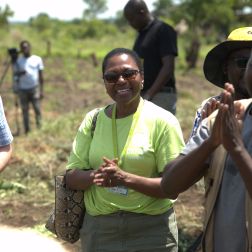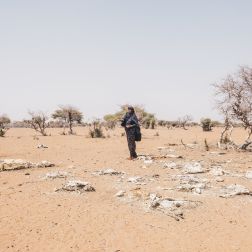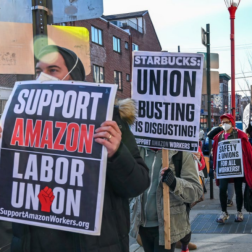- 5 mins read time
- Published: 17th October 2013
What families around the world will eat in one week
‘Where do you do your shopping? How much are you paying for groceries? Do you shop around?’
As the recession continues to bite, the food we eat, where we buy it and how much for seem to be fast replacing the weather as the most popular topic of conversation.
Shiny supermarkets leaflets showcasing ‘2 for 1’ deals falling out of every newspaper, the rise in the number of people splitting their weekly shop in multiple supermarkets to maximise these special offers, the growth in growing vegetables at home and the popularity of blogs such as CheapEats.ie (tagline: ‘tough times, great food’) and activist Jack Monroe’s A Girl Called Jack (documenting the challenges of feeding herself and her three-year-old son on a weekly budget of just £10/€11.70) prove as much.
In a world where there is enough for everyone to eat, 870 million of us go to bed hungry every night. It’s a place where food banks are springing up at home but where food waste is still startlingly high (a third of food bought in Ireland ends up the bin, costing the average household up to €1,000/£850 a year).
Here we visit families from Azerbaijan to Zimbabwe to see what they will eat in one week:
AZERBAIJAN

Mirza (47) and Zarkhara (37) Bakhishov and sons Khasay (18) and Elchin (15) with a week's worth of food outside their home in Shahveller village. Mirza says: “Our small cattle and poultry is everything for us. All our income and livelihood is dependent on them. The main problems for us are related to agricultural water and irrigation of our crops. We used to have problems obtaining animal feed, but now thanks to Oxfam and [partner organisation] Aktivta, our problem is solved.” David Levene/Oxfam
ETHIOPIA

Bayush photographed with her daughter Genet (14) and son Destaw (11) and week's supply of food outside their home in the village of Amba Sebat. The food includes vegetable oil, maize, sugar and shiro (chickpea flour). They live in a small thatched hut without running water or electricity. Bayush is part of a cooperative of 31 women who collectively own land on which they farm vegetables. Tom Pietrasik/Oxfam
LIBERIA

Blagnon Gnepa Herve (43) and Elise Gnamlin Boe (41) and children – (left to right) Ezechiel (21), Ange (18), Isaac (13), Jonathan (15), Moise (6) and Paul (3) – with their food rations. They’re standing outside their tent in a temporary refugee camp for people fleeing violence across the border in the Ivory Coast.
PAKISTAN

Husna La Shari, her husband and seven children live in the village of Khawand Bax La Shari. Husna is responsible for providing for her entire family as her husband is too old to work. Floods destroyed the fields she relied on for farming and harvesting. “It was difficult for me before the flood and now it is more difficult for me as there is no farming or harvesting… I am scared for how I will feed my children," she says. Timothy Allen/Oxfam
SRI LANKA

The Kumarapar family – (left to right) Thangalatchmy (44). Saratha (34), Surkitha (30) and Selvern (70) – outside their house in the village of Muruganwr with a week’s supply of food. They have thampala (a green leafy vegetable), tomatoes, potatoes, onion, chilli, spinach, leeks, cabbage, pumpkin, rice, flour and chicken. Their village is located on the border of what used to be a conflict zone. They have seen their neighbours’ homes set alight and at one point the conflict became so bad they were forced to leave and live in a refugee camp. In 2009 the conflict ended and now the family are rebuilding their lives. Abir Abdullah/Oxfam
TAJIKISTAN

BiBi-Faiz Miralieba (centre) and her family – (left to right) Siyoushi (11), niece Gulnoya Shdova (14), Jomakhon (6), Shodmon (9) and Jamila (13) – with a week’s total food supply in Kaftakharna village. Like many women in rural areas, her husband has migrated to Russia to find work, as there is not enough work for them in Tajikistan to feed their families. Andy Hall/Oxfam
ZIMBABWE

Three generations of the extended Mudzingwa family outside their home in Gutu District with their typical supply of food for a week – a bucket of ground nuts waiting to be shelled by hand and a bucket of maize flour that's turned into a porridge-style paste for every meal. They have been given a plot of land in an Oxfam-supported project and had just planted their first crop when this photograph was taken. Annie Bungeroth/Oxfam
We are helping to ensure people have enough to eat in three ways: by providing emergency food supplies in humanitarian disasters, through long-term development projects that develop sustainable farming methods and with our campaigning that gives a voice to the vulnerable, such as the women farmers who feed their communities and those who provide the raw ingredients for some of the world’s biggest brands.
But we couldn’t do this without your support. Thank you.




